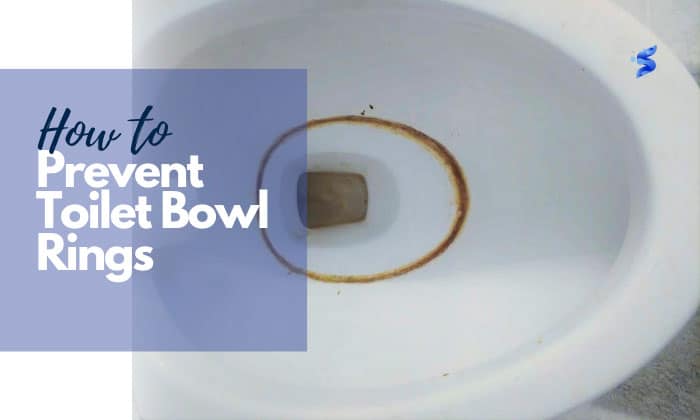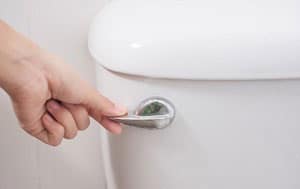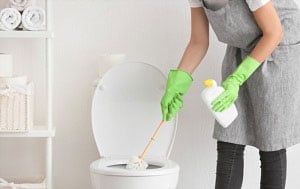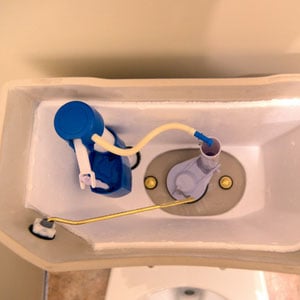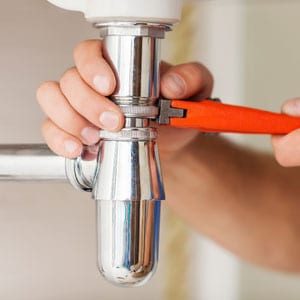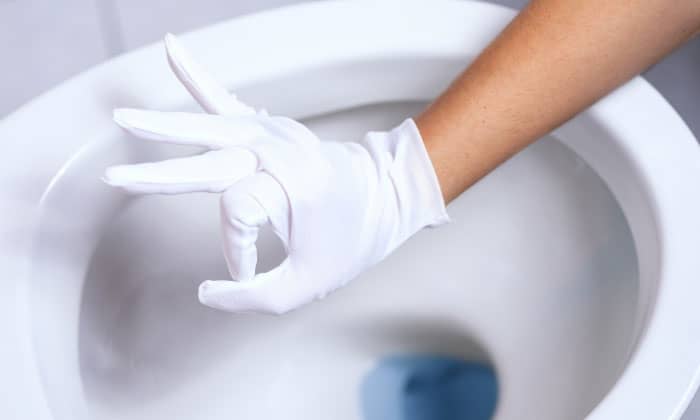Toilet bowl rings are a common bathroom problem that makes the place look dirty, despite smelling like fresheners. So instead of writing about how to remove them, we will teach you methods on how to prevent toilet bowl rings.
The techniques to keep a toilet from getting a ring can be as simple as regularly flushing and cleaning the unit or using vinegar as maintenance. However, we can also experience a point where we must upgrade the pipes and install filtration systems.
Table of Contents
6 Effective Ways to Keep Toilet Bowl Rings Away
Did you know that there are 3 types of toilet water rings?
- red or brown ring – due to hard water (calcium and magnesium)
- black or green ring – mold
- pink or gray ring – airborne bacteria
We listed preventive measures you can do to avoid them, and some of these methods can also get rid of water rings if they already exist in your commode.
When the water becomes stagnant in the bowl because the commode is not used for a long time, a pink ring around the toilet bowl will appear, caused by Serratia marcescens—an airborne bacteria that thrives in moisture.
The simplest preventive measure for this case is to flush the toilet unit regularly, especially in guest rooms. We also recommend routinely cleaning them, which we will discuss in the following method.
What to prepare:
- toilet brush
- sponge
- cleaning gloves
- toilet cleaner
- all-purpose cleaner
Another preventive measure for any color of toilet bowl rings is to clean the bowl regularly, preferably once a week; it will also keep any kind of stains and dirt from occurring. To perform this, see the steps below.
- To begin, flush the toilet first then apply the toilet cleaner around the bowl—pour the cleaner close to the rim.
- Let it soak for 10 minutes. While waiting, use an all-purpose cleaner to clean the commode’s exterior and scrub with a sponge.
- After 10 minutes, scrub the interior with a toilet brush. Make sure to reach under the rims and the waterline to prevent rings.
- Once finished, flush the toilet to rinse.
If nasty rings are already present, grab a toilet bowl ring cleaner that is strong enough to remove stubborn stains.
What to prepare:
- white vinegar (at least 1 cup)
- spray bottle
- toilet brush
White vinegar is an acetic acid that can dissolve dirt, grime, and mineral deposits that cause hard water stains. To prevent toilet bowl rings with this solution, we have 2 options:
- Pour vinegar into the bowl – Once a month, put a cup of white vinegar into the bowl and let it sit overnight. In the morning, brush it with baking soda before rinsing.
- Mixing vinegar with the toilet tank’s water – Simply pour a cup of white vinegar into the tank to mix it with the water, let it sit for a few minutes, and then flush the toilet.
Depending on the severity, vinegar can also remove a toilet ring without scrubbing. Just have a spray bottle with white vinegar and squirt some on the toilet ring to soak it.
Leave it for at least 15 minutes to loosen the mineral or dirt build-up, then brush it before rinsing. Although if the hard water stains are too much, you might need elbow grease.
What to prepare:
- citric acid (at least 1 cup)
- hot water (1 bucket)
- toilet brush
The water that we use to flush the toilet is stored in the tank. So if the tank is dirty or there is mold, then that may cause the black ring in the toilet bowl at the water line. The solution? Clean the tank twice a year.
To do this, here are the simple steps:
1. Turn off the shut-off valve and flush the toilet; keep holding the flush down to drain the tank as much as you can.
2. Pour a bucket of hot water into the tank until the water line, then pour a cup of citric acid into it.
3. Stir the citric acid and hot water mixture using an old ladle or any tool you can use for stirring. Leave it for an hour.
4. After an hour, proceed to flush the toilet. You will see that the mixture has cleaned the tank without scrubbing.
However, you may also scrub the remaining gunk, mold, or mineral deposits (especially at the water line) using a toilet brush.
5. Turn on the shut-off valve and allow the tank to fill, then flush it again for total rinsing.
Lastly, we also recommend using natural or chemical-free tank tablets to avoid toilet bowl stains.
If you’re having a hard time cleaning the ring in your toilet and keeping it “ring-free,” you might want to think about what kind of plumbing pipes you have. If it’s iron or galvanized pipes, they are probably already old and corroded.
To get the brown ring out of the toilet and stop it from returning, we advise you to have a professional plumber look at your plumbing system. Ask them about replacing it with PEX (cross-linked polyethylene) piping and an estimation of how much it would cost.
You’ve done all possible cleaning to the entire toilet unit but the toilet bowl ring keeps coming back—you even have PEX or copper pipes! The culprit? Water supply.
Your water supply must have a high concentration of calcium and magnesium (hard water), and installing a water softener system will do the trick of removing them. On the other hand, filtration systems will take out the particles from the water supply, such as iron.
A professional plumber can best help you with the installation of both systems, preventing the occurrence of toilet bowl rings.
A related guide: Step by step to clean calcium buildup in toilet bowl
What Causes These Rings in Toilet Bowl?
Bacteria, fungi, and mineral deposits (calcium, magnesium, and iron) cause toilet bowl rings; they also worsen if we don’t clean our toilet bowl and tanks.
For this, we recommend weekly toilet cleaning using products that are not harsh, the same with the tank but only twice a year.
How to Get Rid of the Toilet Bowl Ring
Aside from the ways we mentioned above, such as using vinegar and reputable toilet cleaners, cleaning the toilet bowl ring with WD-40 is also another hack.
WD-40 Multi-Use Product can break down lime deposits and rust that cause bowl rings. We only have to spray a generous amount into the bowl and wait for 2 minutes, then scrub with a toilet brush and wipe it away with a sponge (don’t flush it away!).
On the other hand, if you want to ask “Does magic eraser remove the toilet bowl rings?” Unfortunately, it doesn’t. It can clean dirt in the commode interior or exterior, but it’s not capable of removing and preventing toilet bowl rings since it has no cleaning chemicals.
Conclusion
Everybody wants their bathrooms clean and their porcelain thrones in pristine color. So, to teach you how to prevent toilet bowl rings that dirty the commode, we first advise flushing unused toilets every once in a while to keep bacteria from sitting.
Cleaning the toilet bowl and tank regularly is also important; maintenance, such as using white vinegar to prevent rings, is effective.
But if these don’t work, installing PEX pipes to replace the old iron or galvanized steel plumbing and putting up a water softener or filtration system are the final resorts.

I’m Paulk Webb, and I work as a writer for Saveourwaterrebates. I’m happy to put in the time and effort to conduct market research to identify the most pressing issues faced by households concerning their plumbing. Feel free to check out our guides to get the most informed recommendations for how to solve your problems.


